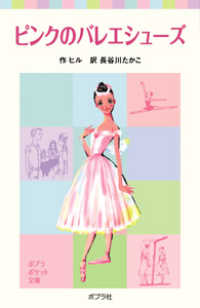- ホーム
- > 洋書
- > 英文書
- > Literary Criticism
Full Description
How the classic aesthetic of 1960s pulp comics influenced art, culture, and politics.
As a form of visual art, comic books rely on a distinct and eye-catching aesthetic. This is especially true of the iconic comics, graphic novels, and illustrations of the 1960s and 1970s. The Look of the 1960s explores the sources of inspiration that influenced the world of comics, beginning with the well-known French comics series Barbarella.
Noted comics scholars Jan Baetens and Hugo Frey analyze the impacts of the often-provocative images featured in the comics of the 1960s, which pushed back against French censorship in a politically tense time, and detail how women resisted their objectification in the comic book industry. Barbarella left its mark on the world and gained international attention, inspiring a movie adaptation and changing the look and content of other popular comics. The "Pulp Pop" movement remains relevant today, continuing to influence the art and political world. With new information about artists and an astute analysis of sociopolitical influence, The Look of the 1960s offers deep insights, making it a must read for comics fans all over the world.
Contents
List of Illustrations
Introduction
Chapter 1. Barbarella and the Invention of Pulp Pop Graphic Narrative
Chapter 2. Pulp Pop and the "Pinup Girl": Stereotypes and Originals
Chapter 3. Pulp Pop Goes to the Cinema: Transmedial Interventions
Chapter 4. Pulp Pop Photography: A Forgotten Rendezvous?
Chapter 5. New York Calling: The Further Adventures of Barbarella, Jodelle, and Company at Grove Press
Chapter 6. "Jazzy Auspices": Pulp Pop, Cultural Legitimation, and the American War in Vietnam
Chapter 7. Writing Pop / Pop Writing
Conclusion
Acknowledgments
Notes
Bibliography
Index








